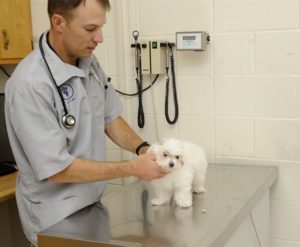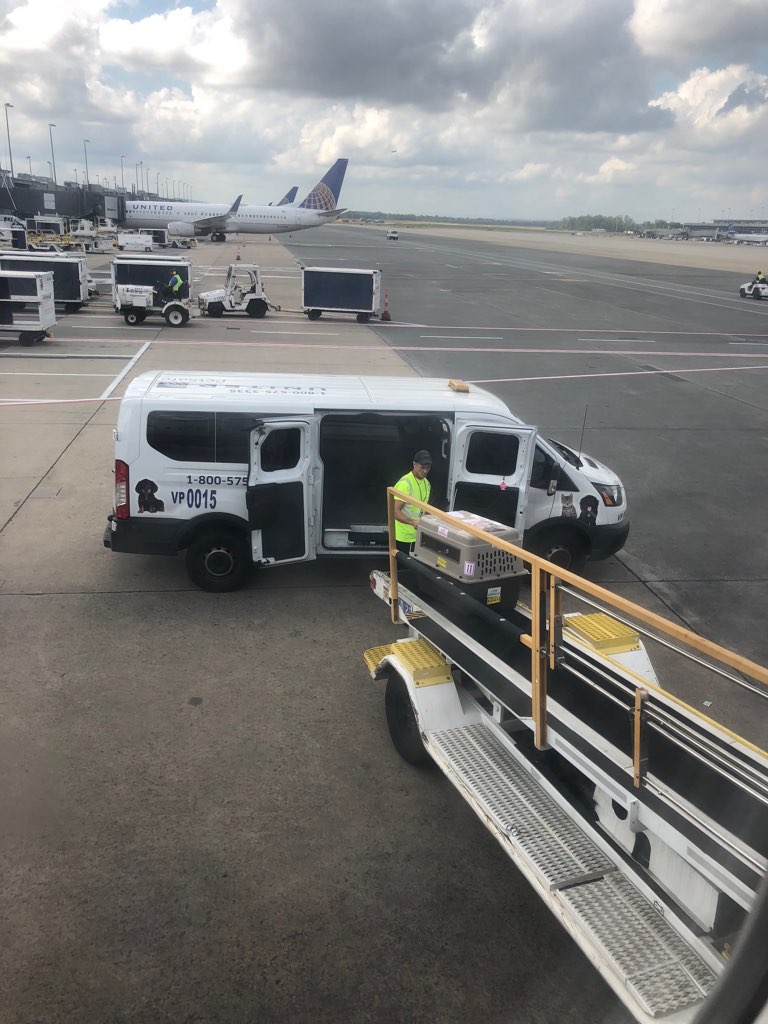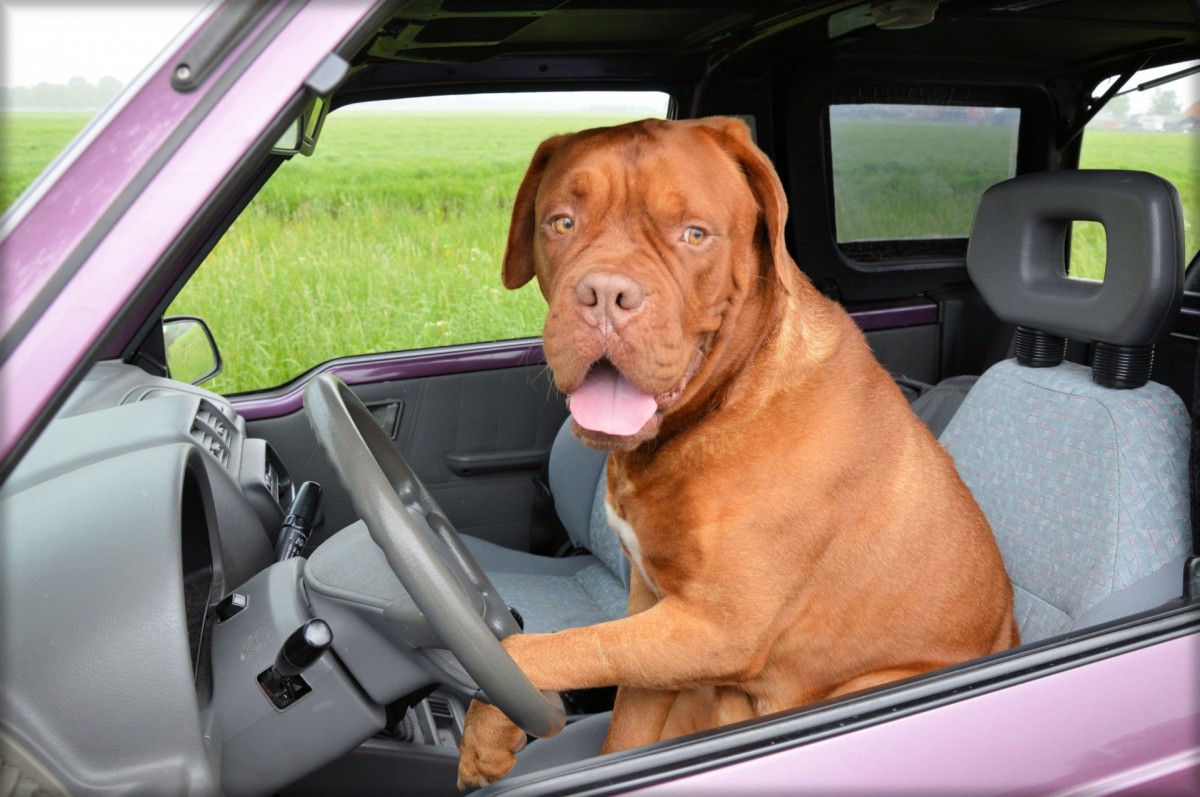Pets and their parents are traveling with increasing frequency. While studies indicate pet parents travel less frequently than their non-pet-owning counterparts, more of them are becoming comfortable with long-distance travel. Surprisingly, the pet travel industry has not progressed in the wake of this skyrocketing popularity. Airlines have adjusted their pet policies to reflect new and persisting dangers, but comparatively little has been done to prepare for the future of pet travel.
Though we have yet to see a lot of significant changes to pet travel, we predict they are just beyond the horizon. The tide is beginning to turn for curated pet travel experiences, and we can only expect technology, manufacturing, and amenities to progress at a similar pace. We peeked into our pet travel crystal ball (i.e. spent some time researching) and predict the following trends and changes for the future of pet travel.
Hotels and Airlines Introduce More Pet Amenities
Whether they need to cater to existing guests or attract a new demographic, hotels and airlines are doing what they can to sweeten the pet travel pot. Airlines are beginning to reevaluate their existing pet policies to make travel safer, more accessible, and less stressful. United Airlines recently conducted an internal audit of their pet policy and imposed several new safety measures. Air India recently allowed a dog to travel in business class—something most airlines prohibit, as an animal’s presence may disrupt high-paying flyers. The tide is beginning to turn, and we’re excited to see how airlines adapt to the increasing number of pet passengers.
Similarly, hotels have begun to capitalize on the importance of pet-friendly policies and amenities. Walt Disney World, which recently implemented a dog-friendly hotel pilot program, has extended the scheme. La Quinta, a popular hotel brand, has extended its pet-friendly amenities to more than 700 locations in the United States. Several resorts have introduced “yappy hour” to their weekly programming, and pet-friendly restaurants are appearing across the country. In the next decade, we expect to see most national hotel chains offering a variety of pet amenities.
The Future of Pet Travel is about Safety
While pet travel safety has always been a priority for airlines and passengers, pet parents are beginning to understand the importance of properly securing pups in vehicles. While pet travel is becoming more frequent, many parents are seeking alternatives to flying. In some cases, this might mean a long-distance road trip. Even if you do not plan to take your pup on a 50mi+ ride, everyday trips to the park and vet can pose a risk to the animal’s health. As this issue gets more coverage, we expect to see a greater push toward pet car safety with more brands rolling out multi-use seatbelts and safety harnesses.
Online Retailers Get Cheaper
While we argue that there are still benefits to shopping at brick-and-mortar stores for pet products, e-Commerce is beginning to turn up the heat. According to a Packaged Facts 2018 survey of U.S. pet owners, 37% of online pet shoppers indicated “I am buying pet products online more than I used to.” Online retailers stock a huge selection of products online. Without the burden of physical stores, they can pass the savings to their customers. However, some brick-and-mortar stores are keeping pace with online-only retailers. PetSmart recently introduced a line of online-only deals to draw more customers. With this added pressure, we expect online businesses to continue dropping prices and seeking cheaper manufacturing options.
Smart Devices Aid Concerned Pet Parents
Pet travel is a nerve-wracking experience. Unless your pet qualifies for in-cabin transport, your furry friend will need to fly in the aircraft’s cargo hold. The inability to check on the animal during a flight is a great stressor for many pet parents. Similarly, pet shipping is a notoriously stressful experience. Most people are overwhelmed when packages are lost, and the thought of losing a pet in transit is an enormous anxiety. Some airlines are already working to address this. Delta, for example, introduced a GPS On-Demand tracking program, which allows pet parents to monitor their animals throughout the journey in real-time. Virgin America prioritizes same-flight cargo shipments, and Alaska Airlines has a Fur-st Class program, which properly educates team members on the basics of animal care. As more animals take to the skies, we expect airlines to keep pace for stressed pet parents.
While our predictions may take years to come to fruition, retailers, hotels, and airlines are already beginning to take notice of increased demand for pet-friendly amenities. Pet travel is only going to become easier, more affordable, and more convenient—we just have to be patient. In the meantime, researching your airlines and airports ahead of your trip is a great way to ameliorate the burden of pet travel.
The Future of Pet Travel
Pets and their parents are traveling with increasing frequency. While studies indicate pet parents travel less frequently than their non-pet-owning counterparts, more of them are becoming comfortable with long-distance travel. Surprisingly, the pet travel industry has not progressed in the wake of this skyrocketing popularity. Airlines have adjusted their pet policies to reflect new and persisting dangers, but little has been done to expand the industry.
Though we have yet to see a lot of significant changes to pet travel, we predict they are just beyond the horizon. The tide is beginning to turn for curated pet travel experiences, and we can only expect technology, manufacturing, and amenities to progress at a similar pace. We peeked into our pet travel crystal ball (i.e. spent some time researching) and predict the following trends and changes in the coming years.
Hotels and Airlines Introduce More Pet Amenities
Whether they need to cater to existing guests or attract a new demographic, hotels and airlines are doing what they can to sweeten the pet travel pot. Airlines are beginning to reevaluate their existing pet policies to make travel safer, more accessible, and less stressful. United Airlines recently conducted an internal audit of their pet policy and imposed several new safety measures. Air India recently allowed a dog to travel in business class—something most airlines prohibit, as an animal’s presence may disrupt high-paying flyers. The tide is beginning to turn, and we’re excited to see how airlines adapt to the increasing number of pet passengers.
Similarly, hotels have begun to capitalize on the importance of pet-friendly policies and amenities. Walt Disney World, which recently implemented a dog-friendly hotel pilot program, has extended the scheme. La Quinta, a popular hotel brand, has extended its pet-friendly amenities to more than 700 locations in the United States. Several resorts have introduced “yappy hour” to their weekly programming, and pet-friendly restaurants are appearing across the country. In the next decade, we expect to see most national hotel chains offering a variety of pet amenities.
Pet Travel Safety Becomes a Priority
While pet travel safety has always been a priority for airlines and passengers, pet parents are beginning to understand the importance of properly securing pups in vehicles. While pet travel is becoming more frequent, many parents are seeking alternatives to flying. In some cases, this might mean a long-distance road trip. Even if you do not plan to take your pup on a 50mi+ ride, everyday trips to the park and vet can pose a risk to the animal’s health. As this issue gets more coverage, we expect to see a greater push toward pet car safety with more brands rolling out multi-use seatbelts and safety harnesses.
Online Retailers Get Cheaper
While we argue that there are still benefits to shopping at brick-and-mortar stores for pet products, e-Commerce is beginning to turn up the heat. According to a Packaged Facts 2018 survey of U.S. pet owners, 37% of online pet shoppers indicated “I am buying pet products online more than I used to.” Online retailers stock a huge selection of products online. Without the burden of physical stores, they can pass the savings to their customers. However, some brick-and-mortar stores are keeping pace with online-only retailers. PetSmart recently introduced a line of online-only deals to draw more customers. With this added pressure, we expect online businesses to continue dropping prices and seeking cheaper manufacturing options.
Smart Devices Aid Concerned Pet Parents
Pet travel is a nerve-wracking experience. Unless your pet qualifies for in-cabin transport, your furry friend will need to fly in the aircraft’s cargo hold. The inability to check on the animal during a flight is a great stressor for many pet parents. Similarly, pet shipping is a notoriously stressful experience. Most people are overwhelmed when packages are lost, and the thought of losing a pet in transit is an enormous anxiety. Some airlines are already working to address this. Delta, for example, introduced a GPS On-Demand tracking program, which allows pet parents to monitor their animals throughout the journey in real-time. Virgin America prioritizes same-flight cargo shipments, and Alaska Airlines has a Fur-st Class program, which properly educates team members on the basics of animal care. As more animals take to the skies, we expect airlines to keep pace for stressed pet parents.
While our predictions may take years to come to fruition, retailers, hotels, and airlines are already beginning to take notice of increased demand for pet-friendly amenities. Pet travel is only going to become easier, more affordable, and more convenient—we just have to be patient. In the meantime, researching your airlines and airports ahead of your trip is a great way to ameliorate the burden of pet travel.




